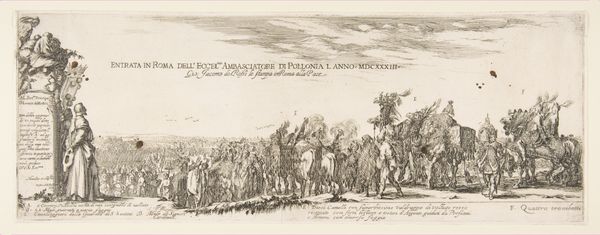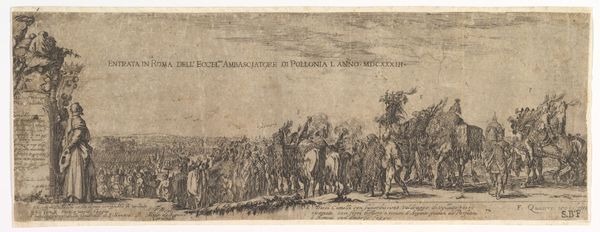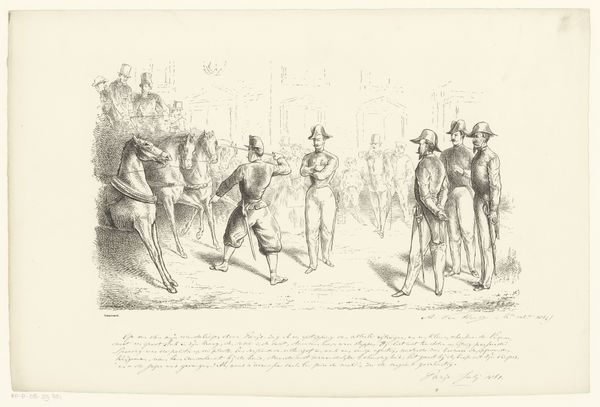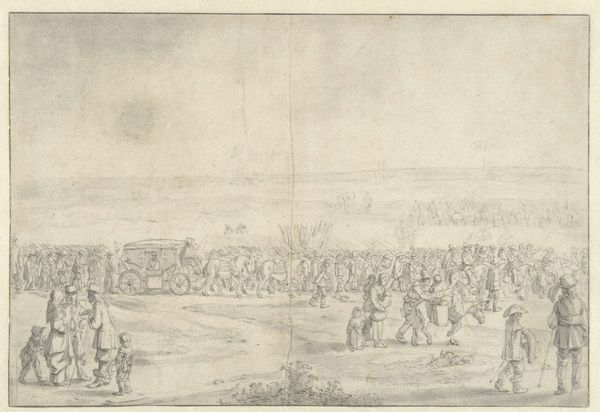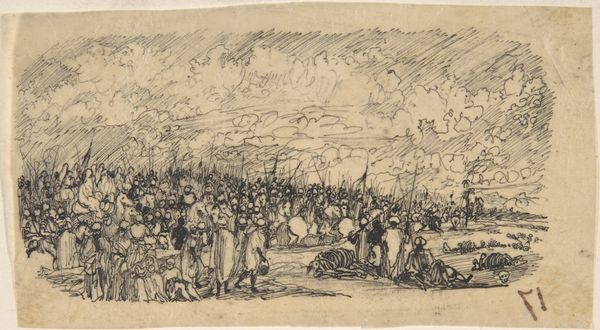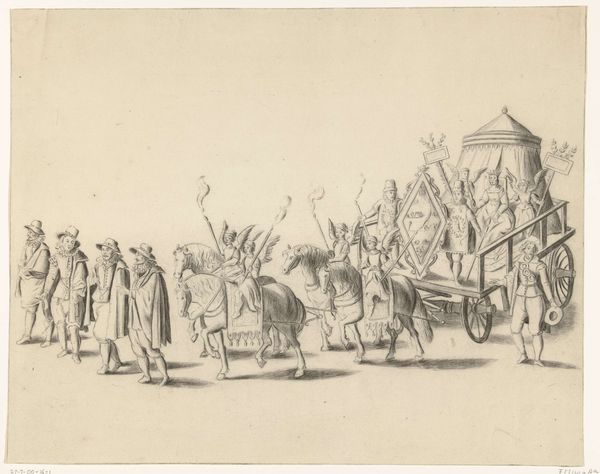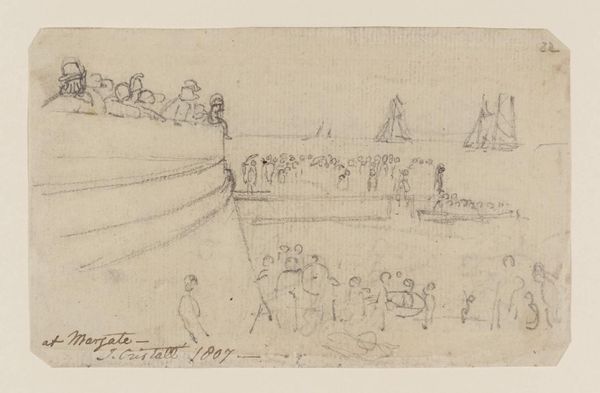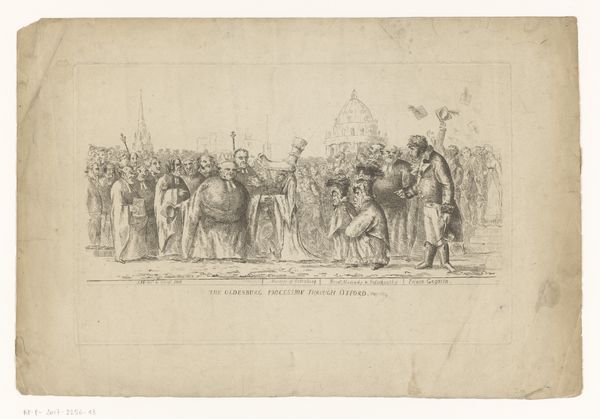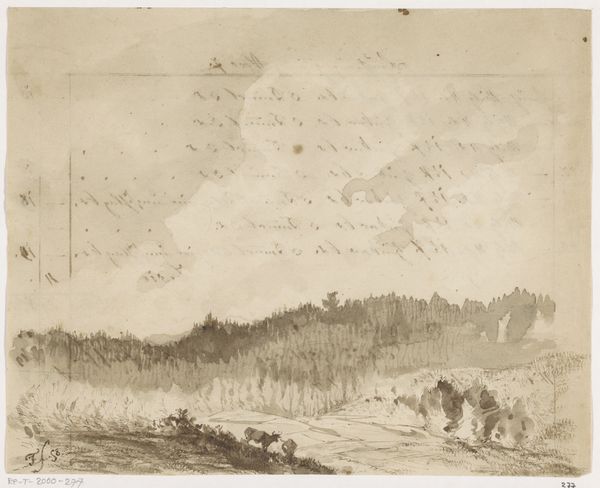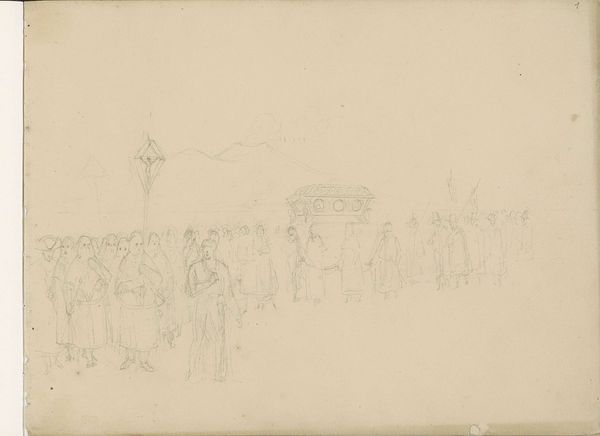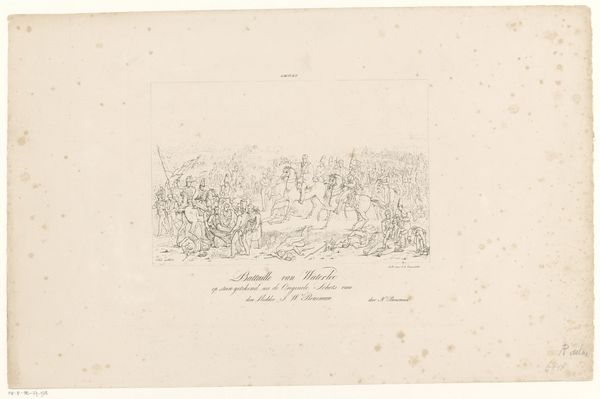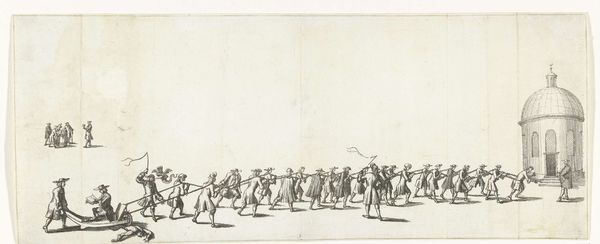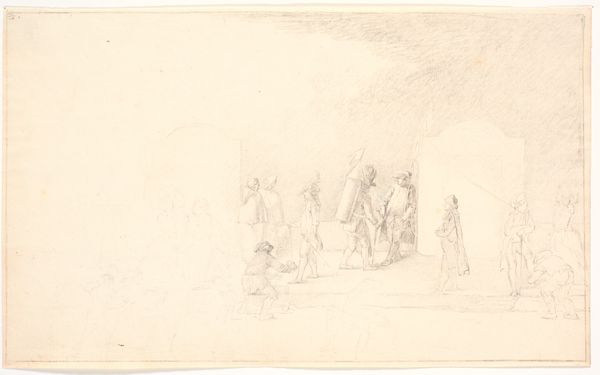
drawing, pencil
#
drawing
#
narrative-art
#
baroque
#
landscape
#
figuration
#
pencil
#
genre-painting
Dimensions: height 164 mm, width 214 mm
Copyright: Rijks Museum: Open Domain
Curator: Before us, we have "Begrafenisstoet," which translates to "Funeral Procession," a pencil drawing by Harmen ter Borch, likely created between 1651 and 1657. It is currently housed here at the Rijksmuseum. Editor: My immediate reaction is the despondent and fading atmosphere, perhaps mirroring the event it depicts. The lines are so delicate, the figures almost ghost-like. The linear composition is also very interesting as the procession recedes into the distance. Curator: The linear quality is significant, wouldn’t you agree? Ter Borch employs line to delineate not just form, but also psychological space. Notice how the foreground figures are more defined, reflecting a baroque interest in rendering observable emotional response. Editor: Precisely! It also underscores a key moment in 17th-century Dutch society. Funerals were public affairs with strong social significance; the costumes, positioning of the figures, even the chosen landscape, are rife with meaning about civic identity. Ter Borch is not just portraying a scene, but representing an event as political theatre. Curator: Political theatre indeed, the drawing serves almost as a study in controlled sorrow. The repetitive nature of the figures suggests the communal aspect of grief and the rigidity of social conduct. But I would ask, what happens if we interpret this in terms of form alone? See how the recession pulls the eye not toward any climactic focal point, but instead leads us off the page altogether. Editor: The fading line indeed guides our viewing into larger historical consideration. Such drawings were preliminary explorations that served commercial and propagandistic objectives and revealed, or solidified class distinction in contemporary Netherlandic society. Curator: Absolutely. By focusing on the procession itself and by placing the horizon almost as high as the top border of the scene, Ter Borch essentially uses line to both compress and elongate the human subjects. It emphasizes the horizontal nature of both a funeral and social hierarchies. Editor: This visual technique also resonates in our own contemporary moment, where socio-political dynamics are still highly controlled and constructed around lines of power. It's a timeless piece that captures not just grief, but a community enacting its power structures in a moment of collective mourning. Curator: I agree completely. The drawing's delicate lines allow us a glimpse into 17th-century social protocols while engaging us formally as an exercise in perspective and design.
Comments
No comments
Be the first to comment and join the conversation on the ultimate creative platform.
